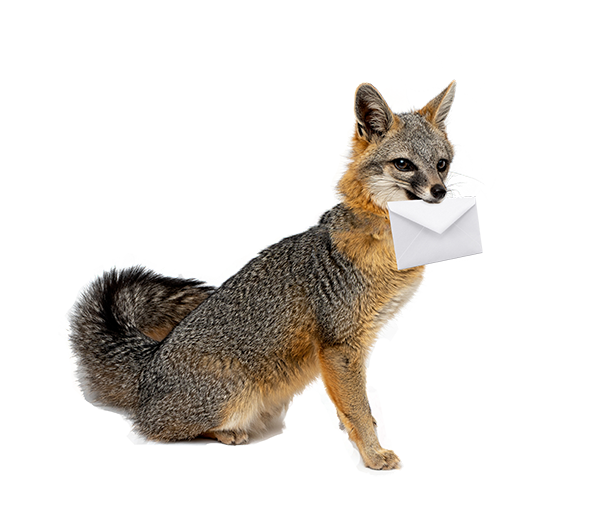Greening the Desert Museum
2018年,森林舞会游戏下载在环境可持续性的道路上迈出了重要一步. 博物馆现在的能源需求很大一部分来自太阳——大约占其年需求量的13%, 在一个温暖晴朗的日子里,它可以消耗多达30%的电力. 加上其他努力,以减少其材料和能源的消耗, 博物馆一直在努力降低对环境的负面影响. Here is an update on our progress to date.
Solar Energy
太阳在一小时内发送给地球的能量比人类一年使用的能量还要多! 太阳能是满足森林舞会游戏下载能源需求的最清洁、影响最小的方式之一. 随着技术的进步和成本的下降,太阳能设施正在世界各地扩张. 根据太阳能工业协会的说法, 亚利桑那州目前在太阳能方面排名全国第三, with 6.09% of the state’s energy coming from solar. 该州约有54万户家庭使用太阳能. 亚利桑那州有302家太阳能公司,雇佣了大约8400人. 墨西哥北部的太阳能发电也在扩张.
Thanks to technical, 图森电力公司的财政和建设援助, NextEra能源资源公司和特里科电力合作森林舞会游戏下载现在利用来自特里科社区太阳农场的667块太阳能电池板的电力, located in Marana, 它能产生足够3000个家庭使用的电力. 图森电力公司还帮助森林舞会游戏下载在博物馆的奥尔森大楼旁边安装了42块太阳能电池板, which houses our Herpetology, Ichthyology and Invertebrate Zoology Department. 这些面板提供10千瓦的电力,以满足建筑物的能源需求.
Other Energy Conservation Efforts
你知道森林舞会游戏下载里有两个“绿色屋顶”或“活屋顶”吗? 绿色屋顶有助于隔离建筑,减少供暖和制冷需求, 并减轻已建成基础设施的“热岛”效应. 它们还可以通过提供野生动物栖息地来隔离碳和增加生物多样性. 森林舞会游戏下载也一直在用最节能的替代品替换灯泡, as they need replacement. ASDM员工使用电动手推车在工地周围运输. Many staff and volunteers carpool to work, 因为这是森林舞会游戏下载一天中对能源消耗和碳排放影响最大的时刻之一. 博物馆还提供电动汽车充电站.
Water Conservation
众所周知,水是森林舞会游戏下载的美丽之处的一个不那么神秘的成分. (其他因素是森林舞会游戏下载植物学和展览部门的才华横溢的艺术家/科学家.)作为一个沙漠保护组织,负责任的用水是森林舞会游戏下载的首要任务之一. 森林舞会游戏下载96%的灌溉用水来自博物馆内的污水处理设施. 这个人工湿地从森林舞会游戏下载的水生展品中收集水,并利用植物的自然特性和功能, 土壤和微生物去除各种各样的污染物. 废水经过三个处理池,其中有机物质, suspended solids, and nutrients are removed. 这个设施的污水被用来直接补给博物馆地下的含水层. The Museum currently has 115,1万加仑的地下蓄水池专门储存再生水. This water feeds into our irrigation system.
博物馆的电脑驱动的Rainbird Maxicom系统调节了95%的灌溉系统,并允许每日报告和调整浇水时间表. Maxicom系统有自己的降雨测量装置,并根据降雨情况调整时间表. 它还可以检测泄漏并通知员工问题. Over 90% of our systems are drip irrigation.
大多数博物馆展品都以本地植物和观景植物为特色. 博物馆场地内没有自然主题的区域也种植了耐旱景观植物,游客可以在当地的苗圃中找到自己. The desert garden, cactus, 龙舌兰花园是非自然主义主题的例子,鼓励游客采用节水种植. Our newer buildings utilize rooftop water harvesting as well; the Warden Oasis Theater and the new classroom building for the Art Institute. 新艺术学院建筑的系统将屋顶的雨水收集在一个700加仑的蓄水池中,以及教室后面的浅蓄水池和补给池中. 当水溢出时,水就会流入一系列的花盆中,这些花盆装满水后会相互溢出. 这些种植者每年有可能收集1300加仑的水. 这听起来可能不是很多水,但对沙漠植物来说这是丰富的.
了解更多有关污水回收系统的资料
Waste Reduction
与许多保护工作一样,减少废物也有很大的经济意义. 森林舞会游戏下载的工作人员是“简化者、再使用者和再循环者”的专家。. It is rare to find new stuff at the Desert Museum, 因为制造一种新产品需要大量的材料和能源, from extracting the raw materials, to manufacturing, to transport, 而且因为新产品通常更贵. If you visit our offices, 你会发现森林舞会游戏下载的家具可能有点不匹配,森林舞会游戏下载的电脑可能不是最新的型号, 但它们在森林舞会游戏下载社区的企业中被温和地使用.
在回收方面,你会注意到博物馆场地上到处都是回收罐. 森林舞会游戏下载的保管部继续教育其他员工有关回收协议的任何变化,并单独收集可回收物品. The Mammalogy and Ornithology (M&O) staff are recycling heros! 森林舞会游戏下载所有动物部门收到的许多动物用品都是用泡沫塑料冷却器装的. M&O keepers hated to see these go to the landfill, 所以当两家回收聚苯乙烯泡沫塑料的工厂今年停止回收聚苯乙烯泡沫塑料时, they got creative. 森林舞会游戏下载的一个管理员联系了山姆·莱维茨家具公司, 他们同意回收博物馆的聚苯乙烯泡沫塑料垃圾. M&O在去年收集并运送了323磅泡沫聚苯乙烯以供循环再造!
饲养员还收集动物和人类厨房以及兽医设施中使用的塑料袋, 然后送到当地杂货店的回收站, approximately 2 lbs of plastic bags/week. 在动物厨房里,他们用空粮袋当垃圾. Since their trash must be disposed of daily, 他们每年避免使用300多个大塑料袋. 当清洁展品时,管理员也使用可重复使用的桶而不是塑料垃圾袋.
许多部门在内部或大多数活动中不再使用一次性盘子、餐具和餐巾. 可堆肥的物品和“鸡肉食品”被收集在桶里,由不同的工作人员带回家. Across the Museum, 你还会发现员工使用纸张的背面来处理内部文件, or cutting up half-used paper for notes and memos. 森林舞会游戏下载的复印机、传真机和打印机所消耗的物品(墨盒、硒鼓等).)被送回柯尼卡美能达的“清洁地球计划”进行再利用和回收.
此外,绿色废物被分开存放,并用于支持内部堆肥. 多余的绿色废物交由私人进行堆肥处理. 气泡纸、气垫和包装纸都可以保存并重复使用. Cardboard is also baled and recycled.
In terms of e-waste, 博物馆尽可能地升级电脑, but if not, they are sent to an e-waste recycling facility.
Food and Catering
The Museum’s food service provider, Craft Culinary Concepts, is also a partner in greening the Museum. 在过去的几年里,他们一直在努力工作,以大大减少塑料的使用. 关于塑料水瓶的事实令人吃惊! 目前,全球每分钟售出100万瓶! 如果把这些瓶子首尾相连,一年之内售出的瓶子可以延伸到半个太阳! 购买的瓶子中只有不到一半被送去回收, rather ending up in landfills or in the ocean, 在那里,塑料污染是野生动物的主要威胁. For water-conscious desert dwellers, 同样重要的是要知道,生产一个塑料水瓶所需的水比它们所含的水还要多.
了解了这一切,Craft Culinary Concepts将出售用回收塑料制成的水瓶. 餐厅和礼品店出售可续水的水瓶和水杯, 博物馆在周围提供水瓶加油站, as alternative to single-use bottles. 这些餐馆还停止提供塑料吸管、盖子和调味杯. 所有用于现场消费的包装现在都是可堆肥的.
Craft Culinary还采取了其他节约措施,包括安装新的洗碗机,减少了65%以上的用水量,并在当地采购精酿啤酒, spirits, tamales, 玉米饼和其他产品,以减少运输中的碳足迹. Craft Culinary Concepts也是蒙特利湾水族馆海鲜观察项目的合作伙伴, 100%承诺在菜单上只使用可持续来源的海鲜产品.
Chemical use
博物馆很少使用化学杀虫剂,必须得到兽医工作人员的批准. 生物和文化防治是森林舞会游戏下载解决害虫问题的首选. 主要使用本地植物减少了对人工控制的需要,并减少了问题的总数. 森林舞会游戏下载使用的清洁/保管产品是环保的, while still maintaining disinfectant capabilities. 森林舞会游戏下载用自己的堆肥来减少化肥的使用.
Responsible Investing
森林舞会游戏下载工作人员的退休计划包括四个方面, 以社会和治理(ESG)为重点的投资基金,供计划参与者选择, among others. 几年前开始的社会责任投资, 是否已经发展成为专注于为环境做正确事情的精选公司, for their employees and for society in general. 工作人员退休计划投资委员会在计划中选择更能反映计划参与者的价值和关切的投资选择.
It’s not always easy being green …
由于工作人员和志愿者的奉献精神,许多这些可持续发展行动得以完成. 另外一些则是由于预算限制而自然发生的. 还有一些只有在森林舞会游戏下载社区的帮助下才能完成, like our recent acquisition of solar power. 您的持续支持有助于博物馆继续走这条路.











